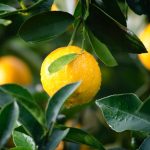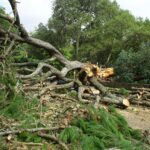At a glance:
- Sufficient watering is important to keep hedges from dying after trimming. Apply water to trimmed hedges regularly, but avoid overwatering.
- After hedge trimming, the plants require additional nutrients to heal and grow back healthy; fertiliser provides the necessary plant nutrients for hedges.
- For growing strong and healthy hedges after trimming, time watering and fertilising
Trimming hedges is crucial to improve the health and aesthetic of your garden hedges. Frequent hedge trimming helps to remove diseased and dead parts of the plant and keeps your hedges healthier while ensuring new growth. Removing diseased and dead parts of hedges also eliminates the risk of insect problems. After proper hedge trimming, your hedges need hydration and nutrition to thrive.
Watering keeps the roots of hedges hydrated and makes it easy to absorb nutrients from the soil. On the other hand, fertilisation provides the nutrients hedges require to thrive, such as nitrogen, phosphorous, and potassium. Both watering and fertilisation are necessary to encourage healthy growth and green foliage in hedges after trimming.
Importance of Watering
Watering is important to maintain healthy hedge growth after trimming, especially for plants without a natural drainage supply. Lack of water in trimmed hedges creates water stress in hedges. There may need to be more than the raw water supply for the plant; trimmed plants need more water supplies to disperse water throughout the wounded parts. Lack of sufficient water supply leaves the trimmed sections dry, and the plant may not recover well from the trimming.
Hedges should have an adequate water supply to prevent trimmed foliage from dying. The growth of new and healthy foliage after hedge trimming depends on the watering frequency. Generally, garden hedges require deep watering once or twice a week. Overwatering can harm hedges, so it is best to avoid it.
Arborists can best help homeowners understand factors affecting watering in hedges, types of hedges, climate, and soil type. You can contact hedge trimming services in Melbourne for a proper understanding of the ‘why and when’ of watering after hedge trimming near the Melbourne area.
Importance of Fertilisation
When parts of plants are trimmed, they lose essential nutrients necessary for their growth. Fertilising hedges after trimming is required because it provides the plant with the nutrients needed to promote healthy growth.
Plants regularly absorb nutrients dispersed in the soil through their roots. When trimming takes place, plants require more nutrients to thrive. The nutrients absorbed from the earth are inadequate to heal the trimmed parts and inspire new growth. So, fertilisation fills the void of necessary nutrients after hedge trimming. Regular fertilisation is important for trimmed plants to grow strong and healthy.
Types of Fertilisers to Use
Generally, you can use two types of fertilisers after hedge trimming; organic and synthetic. Organic fertilisers are natural sources of nutrients, such as animal manure or compost. These fertilisers are slow-nutrient-release fertilisers and are environment-friendly. On the other hand, synthetic fertilisers are complex chemical compounds that provide quick-release nutrients.
Organic fertilisers are highly recommended for hedges because they are slow-release fertilisers. These fertilisers release their nutrients over time, allowing plants to absorb the fertiliser naturally, which is more effective than synthetic fertilisers. Organic fertilisers are highly effective for even growth in hedges, encouraging uniform height and weight growth. You can enquire about hedge trimming services in eastern Melbourne for more professional insights on using fertilisers on hedges.
The Best Time to Water and Fertilise Hedges after Trimming
Watering and fertilising should be timed appropriately in relation to hedge trimming. Water your hedges immediately after trimming to help the plant recover and fertilise it when it is actively growing. The below guidelines will ensure healthy and vibrant growth in hedges after trimming:
Watering:
Watering immediately after trimming is important to help the plant recover from the stress of trimming. Water your hedges deeply after trimming to absorb as much water as possible. After that, you can continue to water the trimmed hedges regularly to inspire healthy plant growth. During hot weather and drought conditions, you should frequently water your hedges to avoid water stress in the plant.
Fertilising:
It is best to fertilise hedges after trimming and when actively growing. During the winter month, most plants remain dormant to conserve energy which they use to survive the winter season. During winter, hedges do not absorb many nutrients, so it is best not to fertilise. The perfect season to add fertilisers is during the spring and summer months.
Common mistakes to avoid when watering and fertilising hedges
Inadequate Watering:
Insufficient water supply to trimmed foliage leads to discolouration and withering in foliage. It is important to water hedges deeply after trimming and regularly for a healthy and strong garden hedge. Too much watering can cause rot in roots and water to evaporate quickly, so avoid overwatering.
Over-fertilisation:
Too much fertiliser can burn the foliage or promote excess growth of weak foliage susceptible to insects and diseases. Over-fertilisation is also harmful to the environment; it can pollute water sources. It is best to use organic fertiliser.
Watering and Fertilising at the wrong time:
It is important to time watering and fertilising properly to maintain healthy hedges. Avoid watering during the hottest time of the day; evaporation is high during the daytime, and water may not reach the deepest parts of the roots.
Fertilising hedges immediately after trimming is harmful to the plant. Hedges are in a state of shock after trimming and may not be able to absorb nutrients properly.





